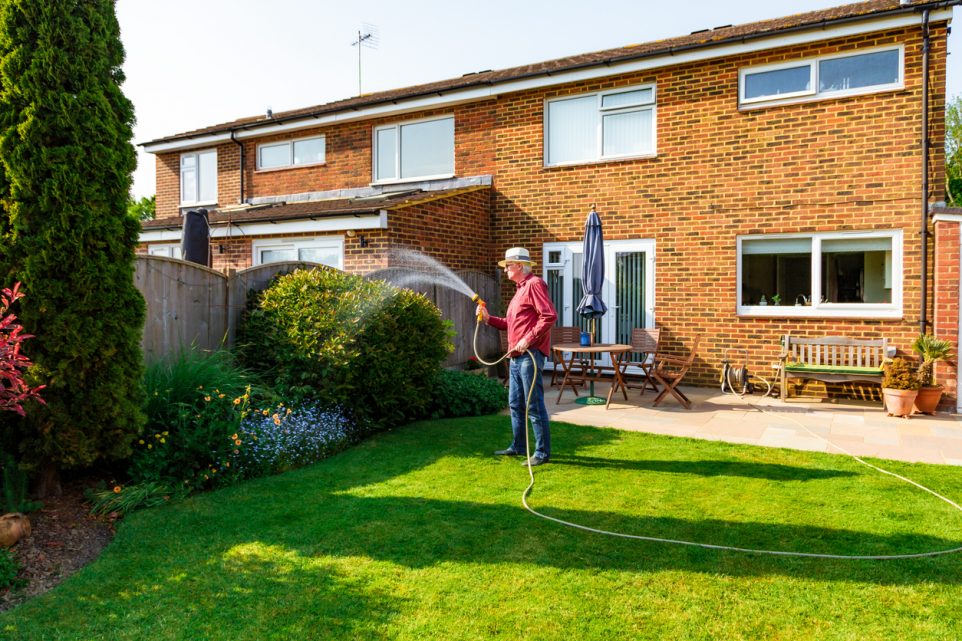Summer Lawn Care: Your Complete Guide

We’re smack in the middle of summer which means that your lawn has already become the stage for barbecues, games, and lounging, basking under the sun’s glow. But, to keep this green canvas lush and welcoming all summer long, it needs a bit more TLC.
Early Summer Prep
Kicking off the season right means setting a solid foundation. As summer approaches, give your lawn a comprehensive check-up. Clear away any leftover debris, twigs, and leaves. This not only tidies up your space but also prevents any rot or fungal growth. A thorough mowing at the start helps too—trimming the grass down encourages new growth and can prevent pests and diseases from taking hold. It’s like a fresh haircut for your lawn, signaling it’s time to grow and thrive.
Watering Strategies
When it comes to hydration, think of your lawn like any living creature—it doesn’t want to gulp; it prefers to sip. Water deeply but infrequently to encourage your grass to develop deeper root systems, which makes it more drought-resistant and hardy. The best time to water? Early morning. Why? Because watering in the heat of the day can lead to evaporation, while watering at night can lead to moisture sitting too long in the grass, encouraging disease.
Nutrition—Fertilization
Your lawn’s diet is crucial. An early summer feed with a balanced fertilizer can help bolster the health of your lawn, pushing it into peak condition to withstand summer stress like heat and play. Look for fertilizers that fit the specific type of grass you have, as different types need different nutrients to flourish.
Mowing with Care
The way you cut your grass significantly impacts its health and growth. Keep your mower blades sharp; a clean cut helps prevent disease. The height at which you cut is also vital—trimming it too short can stress the grass, making it more susceptible to disease and less robust against weeds and heat. The general rule is to cut only the top third of the grass blades at any mowing session.
Don’t discard those grass clippings after mowing. Leaving them on the lawn can help return essential nutrients to the soil. They decompose quickly and provide a natural fertilizer, helping to keep your lawn green without extra effort.
Combatting Weeds
Early summer is a strategic time to tackle weeds, ensuring they don’t overtake the grass as it comes into its prime. Whether you prefer to hand-pull weeds, use ecological treatments, or spray herbicides, dealing with them now prevents a larger chore later.
Aeration Is Key
If your lawn is a hub of activity, it might need aeration—a process that helps alleviate soil compaction. This allows roots to expand, water to penetrate deeper, and air to reach the roots, all of which can help improve the overall health of your grass.
Midsummer Care
As the season progresses and temperatures rise, keep a watchful eye on your lawn’s health. Adjust your watering schedule based on the weather—hot, dry spells might require more frequent watering. However, be wary of overwatering, as too much moisture can be just as harmful as too little.
Monitoring for Pests and Diseases
Regularly inspect your lawn for signs of distress. Are there discolored patches? Bare spots? Unusual insect activity? Early detection means easier management, whether that’s adjusting your lawn care practices or applying treatments.
Your lawn is a dynamic part of your home’s ecosystem, reacting to weather and care. Adjust your maintenance practices as needed throughout the summer, and don’t forget to step back and admire your handiwork. Whether it’s hosting a family gathering, playing games, or simply enjoying the view from your window, your lawn is a vital part of summer joy.